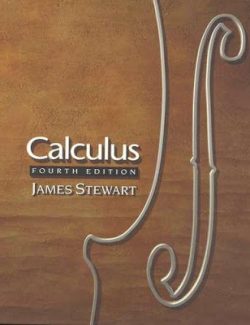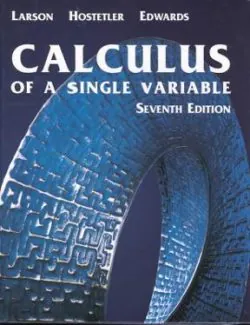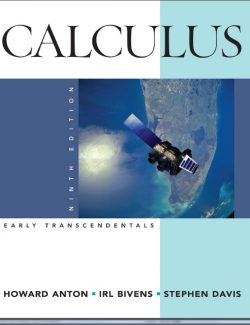Description
There is a mind-numbing sameness to introductory calculus texts. Some authors appear to be engaged in a form of “arms race”, trying to stand out by adding even more exercises to the ends of the chapters and sections. However, there are some significant differences between the texts and my goal here is to point out the major ones between these three books.
The first is in the introductory material, where the Sullivan book is clearly the weakest. Chapter zero contains:
- Algebra review
- Solving basic equations.
- Lines
- Rectangular coordinates.
- Intervals, solving inequalities.
- Lines.
I find this a waste of ink and trees. If we are letting students into our calculus classes that need a review of this basic material, then we have failed in our advising and those students will fail the course. In my opinion, students are there to learn calculus and should already know what a function is. Chapter zero of the Himonas book is devoted to a recapitulation of the categories of functions and chapter one begins the study of limits and continuity. The Anton book follows largely the same path, chapter one contains a review of functions and chapter two begins the study of limits and continuity.
Chapter 2 of the Himonas book describes exponential and logarithmic functions. While I agree that some review is probably necessary, once again, I don’t believe that such an extensive review is required. With forty pages devoted to these functions, you are spending about as much time on them as is done in a precalculus course and the limit is never mentioned in the chapter. I really don’t see any justification for this. When the exponential and logarithmic functions are mentioned in the Anton book, they are being differentiated. Chapter 2 of the Sullivan book lists the classes of functions: quadratic, power functions, exponential and logarithmic. I apply the same criticism here that I assigned to the Himonas book. I just don’t see the need.
The remainder of the Sullivan book, 320 pages, provides an overview of differential and integral calculus up through partial differentiation. It is all at the level of “plug-and-chug”, there is little to no theoretical justification of what is being done. The explanations are adequate for the purpose, but the book is suitable only for the most basic overview of calculus.
The Himonas book is also an overview of differential and integral calculus, with very little in the way of theory. There are a few theorems, although very little in the way of proof. The final chapters cover differential equations, higher-order approximations, and probability and statistics. This is the book that I would use for an overview, I much prefer having the advanced topics included in the text so that I can selectively exclude them as I wish.
The Anton book is a traditional calculus book with formal theorems and explanations of the theoretical background of how calculus works. The coverage is up through vector calculus, partial derivatives and multiple integrals. Since there are so many calculus books and the coverage in them is so similar, I cannot say that this book is outstanding. However, it is certainly better than average and I can recommend it for use in the rigorous first semester course in calculus.













Leave us a comment
3 Comments